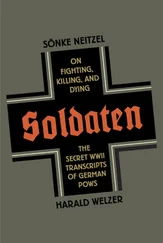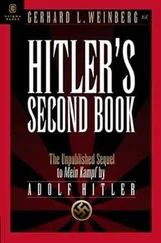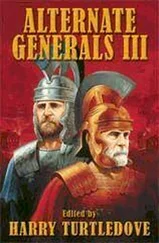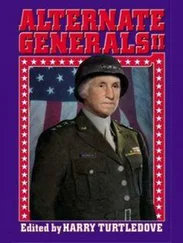Further convincing evidence that the German prisoners were unaware of being eavesdropped on is contained in General Crüwell’s diaries. In captivity he had consciously avoided making notes on political and military matters. In conversation with colleagues he abandoned caution and spoke out at length on the war situation in February 1944, providing MI19 with a precise strategic analysis. If he had suspected that microphones were hidden in the walls at Trent Park he would certainly have exercised discretion as with his diary notes. [71] See Crüwell Diary, Vol. 1, 6.6.1942, p. 22; 13.6.1942, p. 72; 27.6.1942, p. 136; Vol. 2, 15.10.1942, p. 7f. A detailed conversation with Admiral Meixner about the strategic situation is documented at: SRGG 896, 26.4.1944, TNA WO 208/4168.
After reading hundreds of protocols, one is left with the impression that the generals were holding nothing back in conversation, not even von Arnim. Those who wanted to talk did so frankly at Trent Park. In the main, tactical details of operations, absent from the generals’ conversations, were discussed by Wehrmacht other ranks while with a few exceptions the generals discussed more general matters. This was attributable to the higher degree of education, age and the higher military rank they held. It is this fact which makes the CSDIC (UK) protocols so interesting for historians, an insight into the thinking of a chosen circle of senior German officers during World War II beyond detailed military information.
To what extent Trent Park fulfilled its purpose and the British obtained a concrete military advantage from the practice of listening-in to long-term prisoners is only evident in a few cases. The information gleaned from a conversation on U-boat tactics between General Crüwell and Oberleutnant Röhmer has already been mentioned. At the end of March 1943 the War Office received definite information about the development of the V-2 rocket from a conversation between Crüwell and Thoma, [72] Per Hinsley, ‘British Intelligence’, Vol. III, I, p. 326f. There is no transcript of a ‘V-2 conversation’ in the SRM batch containing the spring 1943 discussion between the two officers. In the summary of 1943 conversations there is mention of ‘secret rockets’. It was probably here that Thoma made his prophecy. ‘The Generals – Views of German Senior Officer PoWs’, TNA WO 208/5550.
but otherwise it was only officers captured on the Channel coast who spoke extensively about military tactics. From the latter the Allies may have learned that Cherbourg was not sown with long-term mines. [73] Another exception was a comprehensive discourse by Oberstleutnant von der Heydte regarding his parachute drop during the Ardennes campaign, probably the best detailed description of the operation in existence. To some extent the talk by Oberstleutnant Kogler, Wing Commander JG6, respecting the development of the air war in 1943/44, may have been useful to the Allies. Kogler was shot down during Operation ‘Bodenplatte’ on 1.1.1945. See SRGG 1131 (Heydte), 26.2.1945, also SRGG 1140 (Kogler), 15.3.1945, TNA WO 208/4169.
The direct military value of eavesdropping on German Staff officers may have been limited. Far more successful was the activity directed against junior officers and NCOs of the Luftwaffe and Kriegsmarine. These leaked a wealth of secret information about new weapons, operational tactics, radio and radar equipment of great value for Allied front troops. [74] For all details see Hinsley, ‘British Intelligence in the Second World War’ (5 vols).
The indirect gain, however, was enormous, for the British obtained intimate insight into the Wehrmacht, whose organisations, structure and personalities were now known to the minutest detail. The German prisoners also spoke openly about situation analyses, enabling the British to discover a great deal about how the Germans saw the overall strategic situation.
Social Profile of the Staff Officers
Not all officers who were at Trent Park speak in the published transcripts. From April 1945 CSDIC (UK) recorded far fewer conversations, and for reasons of space here a selection has had to be made to provide a broad spectrum of very senior officers with a spread of character types and biographies. Sixty-three generals, 14 Obristen (colonels), four Oberstleutnante, three majors and two lieutenants appear in the protocols. Most of the 86 were Army officers, 11 were Luftwaffe, four Kriegsmarine and one Waffen SS.
The predominant group at Trent Park was the 63 generals. These divide by rank into Generaloberst – 1, General – 8, Generalleutnant – 23 and Generalmajor – 23. The British were therefore listening-in to the second layer at the top of the Wehrmacht command structure. At first glance it is a reasonably heterogeneous group. At one end of the scale is 56-year-old Generalmajor Alfred Gutknecht, whose social background was the Kaiserreich and who since 1939 had held only administrative posts; at the other the youngest divisional comander of the German land forces, highly decorated SS-Brigadeführer Kurt Meyer, 34 years old, who since 1939 had been at the front in the thick of the fighting. The breadth of the band is what makes the protocols especially valuable, making it possible to see how differing social circumstances and war experiences had a bearing on the content of conversations.
The generals were all born in the years between 1882 and 1910, but the majority (24 generals) were born in 1894–95. The religion is known in only two-thirds of cases: the relationship of 41 Protestants to 10 Catholics may possibly represent the religious split of the whole group. All regions of the 1914 German Reich feature amongst the places of birth, although the majority of officers were Prussian born. [75] So far as can be determined, there were only ever three Austrians at Trent Park: Konter-Admiral Paul Meixner, Oberstleutnant Johann Kogler and Oberstleutnant Wilfried von Mueller-Rienzburg.
Most of the generals came from upper-class origins, although only 18 were actually of noble birth plus three amongst the lower officer ranks. Only eight of the 63 generals had seen long service with the General Staff.
Kroener [76] Kroener, ‘Strukturelle Veränderungen’. For the whole context see also Stumpf, ‘Wehrmacht-Elite’.
suggests that the social profile and make-up of the Wehrmacht officer corps should be distributed in the following manner:
– General Staff officer of WWI
– Front officer of WWI
– Reichswehr officers without war experience
– Soldiers trained before September 1939 but who became officers in wartime.
The generals should be grouped into those who rose to general rank:
– before September 1939
– between 1939 and 1943
– from 1944 onwards.
Following this system, it will be seen that almost all 63 generals served at the front in WWI and were appointed to the rank of general between 1939 and 1945 (one prior to 1939, 52 between 1939 and 1943, 10 between 1944 and 1945). Put another way, the military career path of the majority was generally similar until the outbreak of war in 1939. In WWI they had served at the front as young officers, most of them being senior lieutenants and company commanders at its conclusion: they were then accepted into the Reichswehr and by the outbreak of war in 1939 were as a rule regimental commanders. For further progress technical qualifications and especially achievement at the front were decisive. Of the 33 officers born in 1894–96, six were of the rank of Oberst when captured, 12 Generalmajor, 12 Generalleutnant and four General. Only two of the 63 continued into the West German Bundeswehr.
Experiences in World War II differed widely: whilst one group had made a career at the front, the other ‘also served’ behind the lines. The decorations awarded highlight the division as according to fighting experience. Of the total of 86 officers, 48 had awards for bravery, 26 wore the Knight’s Cross (of whom five had the Oak Leaves, two the Swords and one the Diamonds), 13 had as the highest award for bravery, the German Cross in Gold. In other words, nearly all very senior officers who had been at the front over a long period were decorated. If a general lacked a decoration it was a sure sign either that he had not been at the front long, or that he had been on a quiet section of front, or had not proved his fighting abilities adequately, or he had served at a front base where little opportunity presented itself for distinguished activity. [77] Only two generals who served within the Reich or occupied territories received a high decoration: Generalmajor Wahle the rarely awarded Knight’s Cross of the War Service Cross with Swords, and Generalmajor Krug the German Cross in Silver.
Thus the undecorated general had as a rule experienced a different war to one who had won the Knight’s Cross.
Читать дальше








![Traudl Junge - Hitler's Last Secretary - A Firsthand Account of Life with Hitler [aka Until the Final Hour]](/books/416681/traudl-junge-hitler-s-last-secretary-a-firsthand-thumb.webp)



